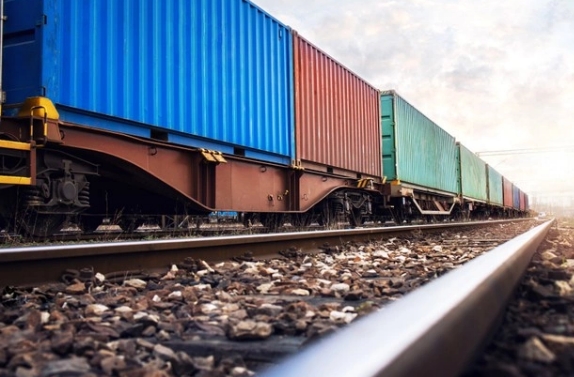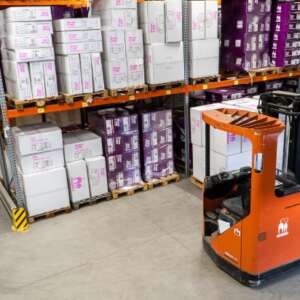How does rail freight transportation work?
Depending on what is being transported, rail freight gets moved on specialized cars. There are refrigerated cars for perishable goods, flatbed cars for aircraft or automobile parts, and intermodal shipping containers as well.
How much freight is moved by rail?
In 2019, 28% of US freight movement was done so on the rail network. Rail freight is responsible for transporting a lot of high value industrial products, like vehicles, electronics, and other equipment through the country.
According to a study, 52% of all rail freight is made up of bulk commodities. Those include: agriculture and energy products, like automobiles and components, construction materials, chemicals, equipment, food, metals, minerals, paper, etc. The other 48% is of consumer goods and other miscellaneous products.
Why should you choose rail freight?
The short response is that rail freight is a cost-effective and efficient transportation method for freight. It’s faster than ocean freight, and cheaper than air freight.
But what exact advantages does rail freight transport have over the other methods?
Cargo transport by train can handle larger volumes and heavier freight over long distances. Heavy freight such as coal, lumber, ore, etc. are likely to be transported by rail. And rail freight has higher security and is more difficult for criminals to steal from. In comparison to theft from parked trucks in easily accessible rest areas, it’s much harder for robbers to get close to a train unnoticed, and steal from a rail wagon.
How is cargo transport by train more efficient?
One of the largest advantages of railroad cargo transportation is how cost-efficient it is. As trains do not have to worry about traffic related problems and cost increases, costs are typically fixed, which means costs per container goes down. Shippers also don’t have to pay extra charges for large fuel use. With lower fuel consumption, trains are four times more efficient than trucks, and create lower carbon emissions as well.
A bonus is that rail freight transportation is much more environmentally friendly as well! Rail freight actually handles almost a third of all intercity freight, but only accounts for 2% of transportation-related emissions.
What are the disadvantages of rail freight?
But nothing is perfect, and there are still disadvantages to rail freight transportation.
To begin with, it is definitely not as flexible as road freight (trucks). Routes and shipping times cannot be personalized, and rail tracks cannot be altered. Rail freight is also more expensive to launch, as it requires more capital investment, and construction and maintenance expenses need to be factored in as well.
Furthermore, there are also no door-to-door services. The shipping process also has to include transhipment, as cargo has to be transferred from one shipping point to another. This involves extra costs, but mainly, it costs extra time.



